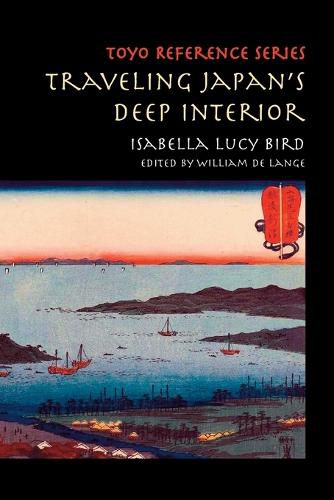Readings Newsletter
Become a Readings Member to make your shopping experience even easier.
Sign in or sign up for free!
You’re not far away from qualifying for FREE standard shipping within Australia
You’ve qualified for FREE standard shipping within Australia
The cart is loading…






This title is printed to order. This book may have been self-published. If so, we cannot guarantee the quality of the content. In the main most books will have gone through the editing process however some may not. We therefore suggest that you be aware of this before ordering this book. If in doubt check either the author or publisher’s details as we are unable to accept any returns unless they are faulty. Please contact us if you have any questions.
Finally the treatment these true classics deserve: thoroughly re-edited and modernized texts, with glossary, index…and beautiful layout to boot.
Isabella Lucy Bird (1831-1904), the English author, photographer, and explorer, is one of the most intrepid foreigners to have traveled Japan’s interior during the late eighteen-seventies, not long after Japan’s forced opening to the Western powers.
Overcoming her initial fears Bird sets out on a journey that lasts the better part of a year. The result is more than impressive. Enduring considerable hardships, she puts behind her a stunning twelve hundred miles in her pursuit of the unbeaten track, much of it through Japan’s unexplored northern regions. On the final leg of her journey Bird crosses over to the northern island of Hokkaido, where she stays with the native Ainu, recording their ancient customs.
On her long journey Bird witnesses landslides, a bridge being swept away by swollen rivers, a boatman being drowned in a rapid’s swirling waters. Not all is drama. She observes a matsuri in Kurokawa, joins a school class in Nikko, attends a wedding in Kubota, and ends up in a mixed-sex bathhouse in Nakano.
While Western in her attitude, Bird is always curious, always learning, always willing to take the Asian perspective. Among Japan’s early Western visitors, Bird’s account now stands out as perhaps the most insightful, the most understanding, and the most comprehensive record of a Japan that has all but vanished.
$9.00 standard shipping within Australia
FREE standard shipping within Australia for orders over $100.00
Express & International shipping calculated at checkout
This title is printed to order. This book may have been self-published. If so, we cannot guarantee the quality of the content. In the main most books will have gone through the editing process however some may not. We therefore suggest that you be aware of this before ordering this book. If in doubt check either the author or publisher’s details as we are unable to accept any returns unless they are faulty. Please contact us if you have any questions.
Finally the treatment these true classics deserve: thoroughly re-edited and modernized texts, with glossary, index…and beautiful layout to boot.
Isabella Lucy Bird (1831-1904), the English author, photographer, and explorer, is one of the most intrepid foreigners to have traveled Japan’s interior during the late eighteen-seventies, not long after Japan’s forced opening to the Western powers.
Overcoming her initial fears Bird sets out on a journey that lasts the better part of a year. The result is more than impressive. Enduring considerable hardships, she puts behind her a stunning twelve hundred miles in her pursuit of the unbeaten track, much of it through Japan’s unexplored northern regions. On the final leg of her journey Bird crosses over to the northern island of Hokkaido, where she stays with the native Ainu, recording their ancient customs.
On her long journey Bird witnesses landslides, a bridge being swept away by swollen rivers, a boatman being drowned in a rapid’s swirling waters. Not all is drama. She observes a matsuri in Kurokawa, joins a school class in Nikko, attends a wedding in Kubota, and ends up in a mixed-sex bathhouse in Nakano.
While Western in her attitude, Bird is always curious, always learning, always willing to take the Asian perspective. Among Japan’s early Western visitors, Bird’s account now stands out as perhaps the most insightful, the most understanding, and the most comprehensive record of a Japan that has all but vanished.